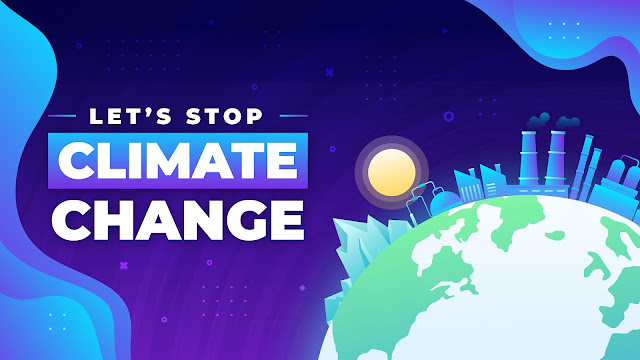The impact of climate change on human migration climate change is one of the most pressing challenges of our time, with far-reaching consequences for ecosystems, economies, and societies around the world. While the physical effects of climate change, such as rising temperatures and extreme weather events, are widely discussed, one often overlooked aspect is its impact on human migration. Climate change has the potential to disrupt livelihoods, displace communities, and lead to large-scale migrations. In this article, we will explore the multifaceted relationship between climate change and human migration and discuss the implications for the future.

- Environmental Displacement
One of the most direct consequences of climate change is the displacement of communities due to environmental factors. Rising sea levels, more frequent and severe hurricanes, and prolonged droughts can render regions uninhabitable. Coastal communities are particularly vulnerable, as they face the dual threat of sea-level rise and increased storm intensity. Low-lying island nations like the Maldives and Kiribati are already experiencing the effects of climate-induced displacement, with their citizens having to consider relocation to safer ground.
- Resource Scarcity
Climate change can also exacerbate resource scarcity, particularly when it comes to water and arable land. Prolonged droughts and shifting rainfall patterns can lead to crop failures and reduced access to clean water. As a result, communities dependent on agriculture and pastoralism find it increasingly difficult to sustain themselves. This resource-driven migration is already evident in parts of Sub-Saharan Africa, where water scarcity and desertification are driving people from their homes in search of better living conditions.
- Conflict and Social Disruption
Climate change can act as a "threat multiplier" by exacerbating existing social and political tensions. Scarce resources and environmental stress can contribute to conflict and displacement. For example, the Syrian civil war, which began in 2011, was partially fueled by a severe drought that displaced hundreds of thousands of rural Syrians. This climate-induced displacement, in turn, contributed to the social unrest that escalated into a full-scale conflict.
- Urbanization and Displacement
As people flee climate-induced environmental challenges, they often move to urban areas in search of safety and economic opportunities. This rapid urbanization can lead to overcrowding and resource strain in cities ill-equipped to handle the influx of newcomers. It can also result in the formation of informal settlements and slums, where living conditions are often substandard, posing health and security risks to migrants.
- Policy and International Response
Addressing the complex issue of climate-induced migration requires a coordinated and multi-pronged approach. International organizations and governments must work together to create policies that protect the rights of climate refugees and provide them with support, both in their home regions and in their destinations. Additionally, efforts to mitigate climate change and adapt to its effects are crucial in preventing displacement in the first place.

Climate change is having a significant impact on human migration, and this impact is expected to grow in the coming decades. As the planet warms, sea levels rise, and extreme weather events become more common, people are being forced to leave their homes in search of safer and more livable places.
One of the most direct impacts of climate change on migration is sea level rise. As sea levels rise, coastal communities are becoming more vulnerable to flooding and inundation. This is forcing people to relocate to higher ground, often inland. In some cases, entire communities are being displaced.
Another impact of climate change on migration is extreme weather events. Droughts, floods, hurricanes, and other extreme weather events are becoming more common and more severe. These events can destroy homes and livelihoods, forcing people to flee to safer areas.
Climate change is also impacting migration indirectly. For example, climate change is exacerbating poverty and food insecurity. This can lead to people migrating in search of better economic opportunities or food security.
The impact of climate change on migration is complex and multifaceted. It is important to note that migration is not always a negative outcome. For some people, migration can be a way to improve their lives and escape poverty and hardship. However, for others, migration can be a disruptive and traumatic experience.
It is also important to note that the impacts of climate change on migration are not evenly distributed. People in developing countries are more likely to be displaced by climate change than people in developed countries. This is because developing countries are often located in areas that are more vulnerable to climate change impacts, and they have fewer resources to cope with these impacts.
The following are some of the ways to address the impact of climate change on migration:
- Reduce greenhouse gas emissions to mitigate the effects of climate change.
- Invest in adaptation measures to help communities cope with the impacts of climate change.
- Provide support to people who are displaced by climate change.
- Promote sustainable migration policies.
It is important to address the impact of climate change on migration in order to protect the rights and well-being of people who are displaced by climate change.

Conclusion
The impact of climate change on human migration is a growing concern that cannot be ignored. Climate-induced displacement is already occurring in various parts of the world, and if left unaddressed, it has the potential to become a major humanitarian crisis. Climate mitigation, adaptation, and international cooperation are key to minimizing the adverse effects of climate change on human mobility. As we strive to combat climate change, we must also recognize the importance of protecting the rights and well-being of those who are forced to move due to its destructive effects.
0 Comments